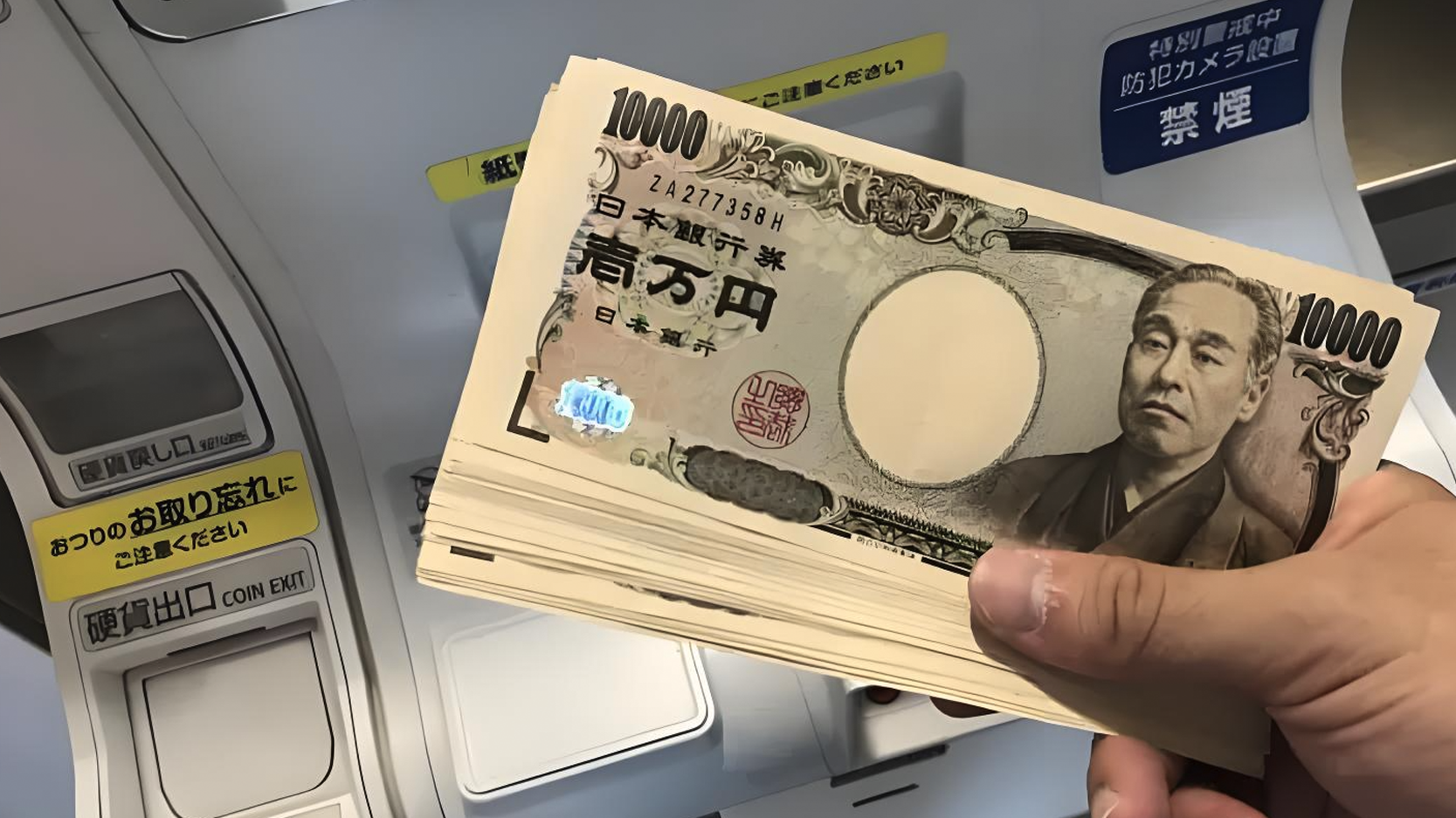Japan 2025: JPY Exchange, Cash vs. Card Spending Tips
How Much JPY Should You Exchange for Japan? 2025 Travel Budget Complete Guide (Cash/Credit Card/Electronic Payments)
Planning a trip to Japan but stressed about “how much JPY to exchange”? Exchange too much and you might not use it all; exchange too little and you risk visiting cash-only stores, affecting your trip enjoyment. This article provides a complete method for assessing your JPY travel budget. Whether you’re shopping in Tokyo or Osaka, or driving around Okinawa enjoying the island scenery, you can easily estimate the optimal amount to exchange. More importantly, I’ll show you how to smartly combine credit cards and electronic payments to make your Japan trip smoother and more cost-effective!
Why Is Cash Still Important in Japan? Is a Cashless Trip Feasible?
Although electronic payments have developed rapidly in Japan, many still view it as a “cash-centric” society. While major shopping districts in cities like Tokyo and Osaka generally accept credit cards or electronic payments, cash remains indispensable for a deep, local cultural experience. A so-called “cashless trip” in Japan, especially for foreign tourists, can be quite challenging.
5 Key Spending Scenarios Where Cash Is Still Needed
In Japan, you’ll find certain situations where cash is king. Preparing enough JPY in advance can help you avoid unnecessary hassles:
- 💴Traditional Markets and Shopping Streets: Places like Ameyoko in Tokyo, Kuromon Market in Osaka, or Makishi Market in Okinawa (when planning how much JPY to exchange) often have stalls and small shops that accept cash only.
- 🍜 🍜 Authentic Ramen Shops or Small Restaurants: Many hidden old eateries, especially those using meal ticket machines, mostly accept cash only.
- ⛩️ Shrines and Temples: Purchasing omamori, ema, or paying offerings (incense fees) all require cash, which also serves as a sign of respect to the deities.
- 🚐 Transportation in Certain Areas: In rural regions, taking buses, taxis, or purchasing certain regional transport tickets is more convenient with cash.
- 🎟️ Attraction Tickets or Lockers: Some smaller attractions, museums, or coin-operated lockers at stations may accept cash only or specific IC cards.
Advantages and Potential Limitations of Credit Cards and Electronic Payments
Of course, cash is not omnipotent.,and combining it with non-cash payments is the smartest approach. Using credit cards and electronic payments (such as Suica, PayPay) can make your trip much easier.
✅ Advantages:
- Convenience: At large merchants such as department stores, chain drugstores, restaurants, and hotels, using a credit card is very convenient, saving you the hassle of handling coins.
- Overseas Rewards: Choosing a high-reward credit card for overseas spending allows you to earn miles or cashback, and sometimes the exchange rate is even better than exchanging cash.
- Seamless Transportation: Using transportation IC cards like Suica or ICOCA not only allows you to ride public transport but also enables small payments at convenience stores and vending machines.
❌ Potential Limitations:
- Merchants Not Supported: As mentioned, small shops and markets may not accept credit cards.
- Overseas Transaction Fees: Most credit cards charge around 1.5% for overseas transactions, so you need to check whether your card’s rewards can offset this cost.
- Electronic Payment Registration Issues: Major Japanese electronic payment tools like PayPay usually require linking to a Japanese phone number or bank account, which can be a higher barrier for foreign tourists.
How to Estimate a Japan Travel Budget? Detailed Analysis of Daily Expenses at 3 Levels
How much will you spend per day? It entirely depends on your travel style. Here, daily expenses (excluding accommodation and airfare) are divided into three levels, giving you a clearer idea for planning your JPY travel budget.
【Budget-Friendly Approach】Daily Budget: ¥8,000 – ¥12,000
Suitable for cost-conscious students or backpackers, focusing on experiences with the highest cost-performance value.
- Food (¥3,000 – ¥4,000): Primarily convenience stores, chain donburi restaurants (such as Matsuya, Sukiya), and supermarket prepared meals, occasionally enjoying a bowl of ramen around ¥1,000.
- Transportation (¥1,500 – ¥2,000): Purchase a subway one-day pass or make good use of the JR Pass, mainly relying on public transport.
- Tickets and Miscellaneous (¥3,500 – ¥6,000): Choose free or low-cost attractions (such as shrines and parks), with shopping focused on drugstores and souvenirs.
【Standard Comfort Approach】Daily Budget: ¥15,000 – ¥25,000
This is the travel style of most people, enjoying food and shopping within the budget.
- Food (¥6,000 – ¥10,000): You can plan a few meals at specialty restaurants (such as yakiniku or sushi), have business lunch sets, and enjoy izakaya for dinner.
- Transportation (¥2,000 – ¥4,000): In addition to the subway, you may take taxis or the Shinkansen for short-distance travel.
- Tickets and Miscellaneous (¥7,000 – ¥11,000): Includes theme park tickets (such as Disney or Universal Studios) and allows extra budget for shopping.
【Luxury Indulgence Approach】Daily Budget: ¥30,000+
No budget limit, pursuing top-tier cuisine and unique experiences.
- Food (¥15,000+): Enjoy Michelin-starred restaurants, premium wagyu, and kaiseki cuisine.
- Transportation (¥5,000+): Primarily taxis, Shinkansen first-class, or private car hire, prioritizing efficiency and comfort.
- Tickets and Miscellaneous (¥10,000+): Shop for luxury goods and participate in paid experiential activities (such as kimono experiences or tea ceremonies).
Travel Duration vs. Recommended Currency Exchange Amount (Practical Examples)
After understanding daily expenses, let’s look at how much cash to prepare for different itineraries. The following recommended cash amounts are based on a “cash-first, card-second” strategy, mainly used for transportation, small meals, tickets, and market purchases.
Example 1: Tokyo/Osaka 5 Days 4 Nights Independent Travel Recommended JPY Cash
- Approach: Standard Comfort Approach
- Daily Cash Budget: Approx. ¥10,000 (Food ¥4,000 + Transportation ¥2,000 + Miscellaneous ¥4,000)
- Total Recommended Exchange: ¥10,000 × 5 days = ¥50,000. It is advisable to prepare an additional ¥10,000 – ¥20,000 as backup cash.
Example 2: Okinawa 5 Days 4 Nights Self-Drive Trip Recommended JPY Cash (Special Considerations)
How much JPY to exchange for Okinawa? This requires special consideration, as spending patterns in Okinawa differ slightly from major cities.
- Approach: Standard Comfort Approach (Self-Drive)
- Special Considerations: Parking fees, highway tolls (ETC can use cards, but some parking lots accept cash only), and cash-only areas such as local fish markets or Makishi Market.
- Daily Cash Budget: Approx. ¥12,000 (Food ¥5,000 + Transportation-related cash ¥3,000 + Miscellaneous ¥4,000)
- Total Recommended Exchange: ¥12,000 × 5 days = ¥60,000. Due to the higher uncertainty of self-driving, it is recommended to increase backup cash to ¥20,000.
Example 3: Japan 7 Days 6 Nights Multi-City Trip Recommended JPY Cash
- Approach: Standard Comfort Approach
- Daily Cash Budget: Approx. ¥10,000
- Total Recommended Exchange: ¥10,000 × 7 days = ¥70,000. Multi-city travel involves more transportation and incidental expenses, so it is recommended to prepare ¥20,000 – ¥30,000 as backup cash.
Frequently Asked Questions (FAQ)
Q1: Which JPY denominations are most practical to exchange? (¥1,000/¥5,000/¥10,000)
A: It is recommended to have all three denominations. Large ¥10,000 bills are suitable for hotels or high-value purchases; ¥5,000 and ¥1,000 bills are the most convenient for daily use, whether for transportation, meals, or small purchases. Avoid exchanging only large bills to prevent difficulties with change at small shops.
Q2: Is it more cost-effective to exchange at a bank in Taiwan or withdraw from an ATM in Japan?
A: In most cases, exchanging JPY cash at a bank in Taiwan first is the most cost-effective. It is recommended to use online exchange to get a better rate, then pick up the cash at the airport or designated branch. While Japanese ATM withdrawals are convenient, they usually incur two fees—from the local bank and the issuing bank in Taiwan—and the exchange rate may not be favorable. You can refer to the posted rates of Taiwan banks as a benchmark for currency exchange.
Q3: What if I accidentally run out of JPY cash? Emergency Solutions Guide
A: If you run short on cash, there are several emergency options:
Credit Card Cash Advance: This is the fastest but most expensive method. In addition to fees, it will trigger revolving interest, so it is not recommended unless absolutely necessary.
Overseas ATM Withdrawal: Ensure your debit card has the “international withdrawal” function enabled and you know the 4-digit magnetic stripe PIN. Although fees apply, it is better than a cash advance.
Find a Currency Exchange: In major cities, currency exchange counters are usually near stations or department stores, but the rates are generally less favorable than exchanging in Taiwan.
Conclusion
In summary, when planning your JPY travel budget, the best strategy is “cash-first, card-second.” Before departure, based on your travel duration and spending style, use the daily budget guidance provided in this article to determine your base cash amount (recommended at least ¥50,000 per person), and pair it with a credit card offering overseas rewards above 1.5% to confidently handle most spending situations. Remember, a well-planned budget is the foundation of a perfect trip. Enjoy your time in Japan!
Related Articles
-
Which Exchange Is Best for Beginners? 2025 Beginner’s Guide and Exchange Recommendations Just stepped into the new world of cryptocurrency but already overwhelmed by the countless exchanges out there? When faced with the big question, “Which exchange is best for beginners?”, many people simply don’t know where to start. In...2025 年 11 月 17 日
-
Exchange Fund Transfer Procedure: Illustrated Guide to Deposits, Withdrawals, and Wallet Transfers New to the world of cryptocurrency but overwhelmed by the complicated fund operations? You often hear terms like “deposit”, “withdrawal”, and “fund transfer”, yet when it comes to actual operation, you worry that pressing the wrong button might...2025 年 11 月 17 日
-
Exchange API Application and Integration Tutorial: Understand API Trading Settings in One Article! Tired of watching the market all day and placing orders manually, only to miss the best entry and exit points? Want to implement 24/7 automated trading strategies through programming but don’t know where to start? This article...2025 年 11 月 17 日













